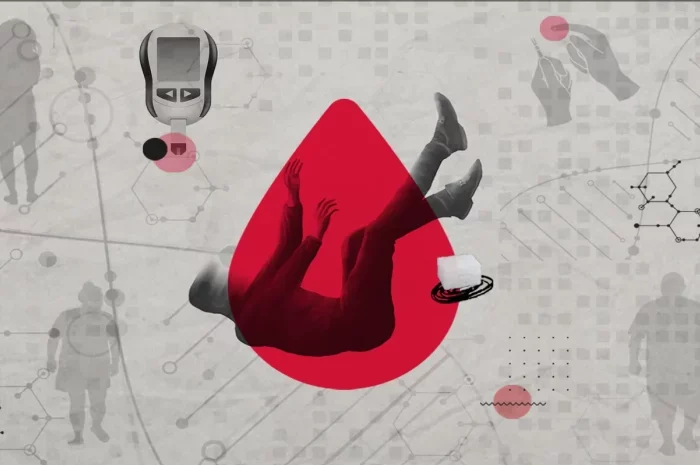Diabetes mellitus is a chronic metabolic disorder characterized by persistent hyperglycemia, or high blood glucose levels. It is primarily categorized into two major types: Type 1 and Type 2 diabetes. Both conditions lead to hyperglycemia, but they do so through different mechanisms and have distinct clinical features, risk factors, and management strategies. Understanding these differences is crucial for effective diagnosis, treatment, and patient education.
Type 1 Diabetes Hyperglycemia
Pathophysiology
Type 1 diabetes, formerly known as juvenile diabetes or insulin-dependent diabetes, is an autoimmune condition. It occurs when the body’s immune system mistakenly attacks and destroys the insulin-producing beta cells in the pancreas. Insulin is a hormone essential for glucose uptake into cells; without it, glucose remains in the bloodstream, leading to hyperglycemia.
In Type 1 diabetes, the destruction of beta cells is usually rapid, and symptoms of hyperglycemia can develop quickly over a few weeks. The onset is often sudden, and individuals typically present with acute symptoms of hyperglycemia, such as polyuria (frequent urination), polydipsia (excessive thirst), and weight loss despite normal or increased appetite.
Risk Factors
The exact cause of Type 1 diabetes is unknown, but it is believed to involve a combination of genetic and environmental factors. Certain HLA genes, which regulate the immune system, are known to increase the risk. Environmental triggers, such as viral infections, may initiate or accelerate the autoimmune process in genetically predisposed individuals.
Clinical Presentation and Diagnosis
Patients with Type 1 diabetes often present with the classic symptoms of hyperglycemia mentioned earlier. In some cases, they may also experience diabetic ketoacidosis (DKA), a life-threatening condition characterized by very high blood glucose levels, ketone production, and metabolic acidosis.
Diagnosis is confirmed through laboratory tests:
- Fasting plasma glucose (FPG): ≥126 mg/dL
- Random plasma glucose: ≥200 mg/dL with symptoms of hyperglycemia
- Hemoglobin A1c (HbA1c): ≥6.5%
- Autoantibody testing: Presence of islet cell antibodies, insulin autoantibodies, and others to distinguish Type 1 from Type 2 diabetes.
Management
The primary treatment for Type 1 diabetes is insulin replacement therapy. This can be administered through multiple daily injections (MDI) or continuous subcutaneous insulin infusion (CSII) via an insulin pump. The goal is to mimic physiological insulin secretion to maintain blood glucose levels within a target range and prevent complications.
Additionally, patients must regularly monitor their blood glucose levels, typically using fingerstick testing or continuous glucose monitoring (CGM) systems. Education on carbohydrate counting, diet, and exercise is essential for effective self-management.
Type 2 Diabetes Hyperglycemia
Pathophysiology
Type 2 diabetes, previously called adult-onset diabetes or non-insulin-dependent diabetes, is characterized by insulin resistance and relative insulin deficiency. Unlike Type 1 diabetes, the pancreas still produces insulin, but the body’s cells do not respond effectively to it. Over time, the pancreas may not be able to produce enough insulin to overcome this resistance, leading to hyperglycemia.
Insulin resistance is often linked to obesity, particularly visceral fat accumulation. Free fatty acids released from adipose tissue can impair insulin signaling, leading to decreased glucose uptake by muscle and liver cells and increased glucose production by the liver.
Risk Factors
Several risk factors are associated with Type 2 diabetes, including:
- Genetics: Family history of diabetes increases risk.
- Age: Risk increases with age, particularly after 45.
- Obesity: Excess body fat, especially abdominal fat, is a significant risk factor.
- Physical inactivity: Sedentary lifestyle contributes to insulin resistance.
- Diet: Poor dietary habits, such as high intake of processed foods and sugary beverages.
- Ethnicity: Higher prevalence in certain populations, such as African Americans, Hispanics, Native Americans, and Asians.
- Other medical conditions: Conditions such as hypertension, dyslipidemia, and polycystic ovary syndrome (PCOS) are associated with increased risk.
Clinical Presentation and Diagnosis
Type 2 diabetes often develops gradually, and individuals may be asymptomatic for years. When symptoms do occur, they are similar to those of Type 1 diabetes, including polyuria, polydipsia, and blurred vision. Some individuals may experience recurrent infections, slow-healing wounds, or acanthosis nigricans (dark, velvety patches of skin).
Diagnosis is made using similar criteria to Type 1 diabetes:
- Fasting plasma glucose (FPG): ≥126 mg/dL
- Random plasma glucose: ≥200 mg/dL with symptoms of hyperglycemia
- Hemoglobin A1c (HbA1c): ≥6.5%
- Oral glucose tolerance test (OGTT): 2-hour plasma glucose ≥200 mg/dL
Management
Management of Type 2 diabetes focuses on lifestyle modifications and pharmacotherapy. Lifestyle interventions include:
- Diet: Emphasis on a balanced diet with controlled carbohydrate intake, increased fiber, and reduced saturated fats.
- Exercise: Regular physical activity to improve insulin sensitivity and glycemic control.
- Weight management: Achieving and maintaining a healthy weight through diet and exercise.
Pharmacotherapy includes several classes of medications, often used in combination:
- Metformin: First-line treatment that improves insulin sensitivity and reduces hepatic glucose production.
- Sulfonylureas: Stimulate insulin secretion from pancreatic beta cells.
- DPP-4 inhibitors: Increase incretin levels, which inhibit glucagon release and stimulate insulin secretion.
- GLP-1 receptor agonists: Enhance glucose-dependent insulin secretion and slow gastric emptying.
- SGLT2 inhibitors: Increase renal glucose excretion.
- Insulin: May be necessary in advanced cases or during periods of significant hyperglycemia.
Comparing Hyperglycemia in Type 1 and Type 2 Diabetes
Onset and Progression
Type 1 diabetes typically has an abrupt onset, often during childhood or adolescence, though it can occur at any age. The rapid destruction of beta cells leads to a sudden appearance of symptoms and potentially acute complications like DKA.
In contrast, Type 2 diabetes develops insidiously, often over many years. It is usually diagnosed in adults, although the increasing prevalence of obesity has led to more cases in younger individuals. Type 2 diabetes may go undiagnosed for a long time, during which chronic hyperglycemia can cause damage to various organs.
Insulin Dynamics
In Type 1 diabetes, the absolute lack of insulin requires exogenous replacement to control hyperglycemia. The management is focused on balancing insulin doses with carbohydrate intake and physical activity.
Type 2 diabetes involves insulin resistance and a relative deficiency of insulin. Treatment aims to improve insulin sensitivity, reduce hepatic glucose output, and enhance endogenous insulin secretion. While insulin therapy may eventually be required, many patients can manage their condition with oral or non-insulin injectable medications for several years.
Complications
Chronic hyperglycemia in both types of diabetes can lead to similar long-term complications, including:
- Microvascular complications: Retinopathy, nephropathy, and neuropathy.
- Macrovascular complications: Cardiovascular diseases such as coronary artery disease, stroke, and peripheral artery disease.
However, the risk and onset of these complications can vary. For instance, individuals with Type 2 diabetes often have other coexisting conditions like hypertension and dyslipidemia that compound cardiovascular risk.
Management Challenges
The management of Type 1 diabetes focuses heavily on patient education and self-management skills due to the complexity of insulin therapy. Patients must learn to adjust insulin doses based on blood glucose levels, food intake, and physical activity, and they need to be adept at recognizing and treating hypoglycemia.
Type 2 diabetes management also involves patient education, particularly regarding lifestyle changes. However, the availability of various pharmacological options allows for more individualized treatment plans. The progressive nature of Type 2 diabetes often necessitates adjustments in therapy over time, including the potential need for insulin.
Psychosocial Aspects
Living with diabetes, regardless of type, can be challenging and impact quality of life. However, the experiences and psychological impacts can differ. Individuals with Type 1 diabetes, diagnosed often in childhood or adolescence, may face unique challenges related to growing up with a chronic condition. This can affect their social interactions, school performance, and mental health.
Adults with Type 2 diabetes may experience stress related to lifestyle changes, the stigma of having a “lifestyle disease,” and managing comorbid conditions. Additionally, the gradual progression of the disease can lead to frustration and feelings of helplessness as management strategies evolve.
Conclusion
Type 1 and Type 2 diabetes are distinct conditions that lead to hyperglycemia through different mechanisms. While both types require diligent management to prevent complications, the approaches differ significantly due to variations in pathophysiology, onset, and progression. Understanding these differences is essential for healthcare providers to offer personalized care and for patients to effectively manage their condition.
Education, regular monitoring, and adherence to treatment plans are critical components of diabetes management. Advances in technology and pharmacotherapy continue to improve the lives of individuals with diabetes, offering better control and quality of life. As research progresses, a deeper understanding of these diseases will likely lead to more effective prevention and treatment strategies.
Related topics:


























